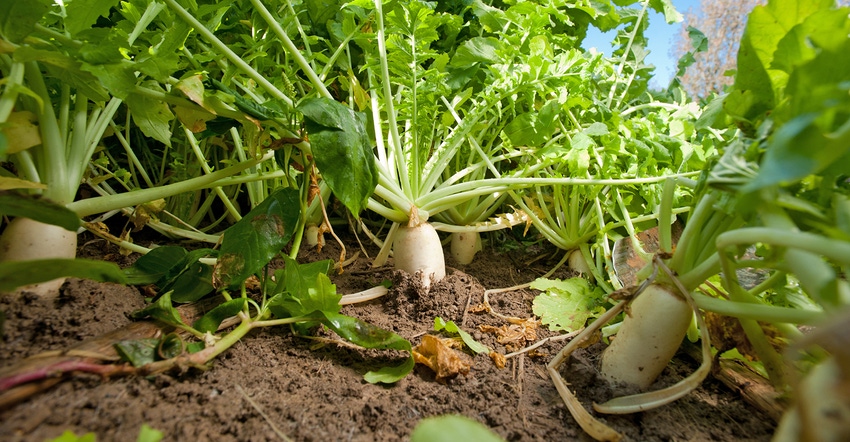
Three big changes are coming to agriculture, said Gabe Brown, of Brown’s Ranch, Bismarck, N.D., at the recent North Dakota Soil Health Summit. Brown is a leading champion of regenerative agriculture — a system of practices such as no-till, diverse rotations, cover crops and planned grazing that build soil health.
The three changes Brown predicts are coming are:
1. An end to monoculture cropping systems. Within 10 years, polyculture cash crops — the growing of several crops in the same field at the same time — will be the norm. Some farmers are already doing it now, Brown said. He grows oats, barley, peas, flax and lentils together and harvests them for hog and poultry rations and cover crop seeds.
2. Introduction of handheld bio-nutrient food scanners. Retailers and consumers will scan food with a meter to read its nutrient density. “This is coming and coming soon. I think the device is going to be used to read chemical residue, too,” he said.
3. Premiums for food produced with regenerative practices. Food companies will source and pay for grain and meat based on soil health. Brown said he has already consulted with General Mills — a company with several natural and organic labels — on a soil health questionnaire. Potential suppliers would be asked 25 questions about their use of no-till, the diversity of their crop rotation, use of cover crops and other practices. Their answers will put them in Gold, Silver, Bronze and other categories.
“You’re going to be paid for your product … based on this,” Brown said.
What is regenerative agriculture?
Regenerative agriculture is an approach to food and farming systems that rejects pesticides, artificial fertilizers and aims to regenerate topsoil, increase biodiversity improve water cycles enhance ecosystem services, support bio-sequestration, increase resilience to climate fluctuation, and strengthen the health and vitality of farming and ranching communities.
Regenerative agriculture is based on applied research and thinking that integrates organic farming, permaculture, agroecology, agroforestry, restoration ecology, Keyline design and holistic management. On a regenerative farm biological production and ecological structure grow more complex over time. As living soil deepens, yields increase and external inputs decrease.
About the Author(s)
You May Also Like






